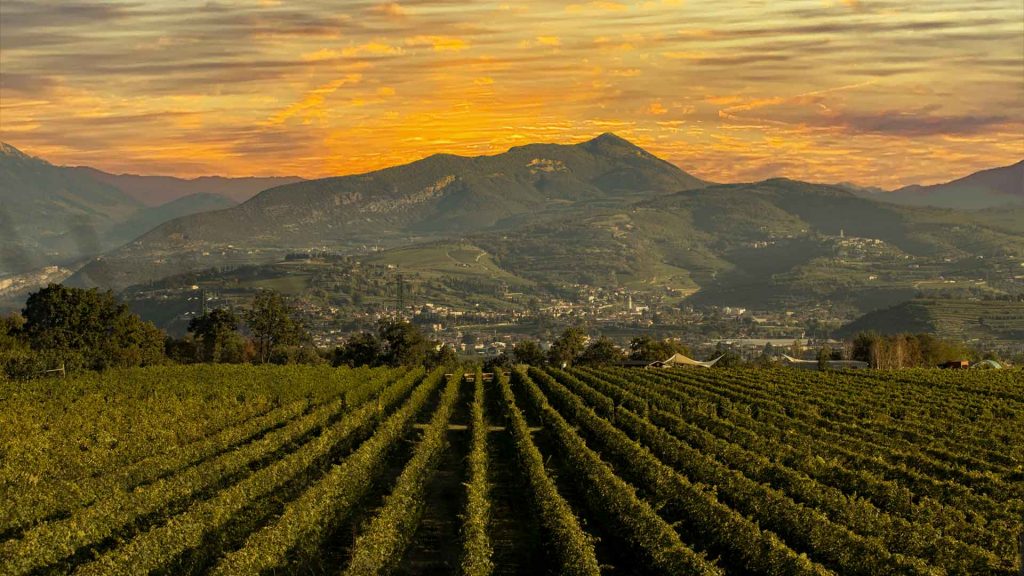Territory
Tenuta Nobiltron is located in the Bardolino Doc area a few kilometers from Lake Garda.
Bardolino Doc
The Bardolino Doc area, outlined in 1968, instead includes in whole or in part the municipalities of Torri del Benaco, Caprino, Rivoli, Pastrengo, Bussolengo, Castelnuovo del Garda, Sona, Peschiera del Garda, Sommacampagna and Valeggio sul Mincio.
The Bardolino production area occupies a large part of the Veneto sector of the Garda morainic amphitheater.
The influence of Garda’s Lake mitigates the continental temperatures of the Po valley, creating a Mediterranean climate.
Bardolino Doc
The moraine soil, dry and impermeable, has a predominantly gravelly-sandy soil, very rich in minerals.

Garda’s Lake
Garda’s Lake
Garda’s Lake, also called Benàco, is the largest Italian lake.
Divided between the provinces of Verona, Brescia and Trento, it is enclosed to the east by the slopes of Monte Baldo and to the west by the walls of the Brescia Prealps. Geologically it is a pre-Alpine lake of glacial origin, formed in the Neozoic era. Various glaciations followed one another over the millennia, until the climate began to soften and the glaciers to retreat, leaving basins filled with water; while the heaps of debris, caused by the retreat of the ice, formed the morainic amphitheater that surrounds the southern part of Lake Garda.Nature
Climate and vegetation
The Garda basin is part of a continental type climatic zone but, since it hosts a considerable mass of water, the climate is sub-Mediterranean: the presence of the lake, in fact, allows to retain the summer heat, gradually redistributing it in the winter months, softening so does the climate.
At the same time, the presence of the mountains protects the Garda from the cold north winds.
This mild climate has given rise to a Mediterranean-type vegetation.

Monte Baldo
Monte Baldo
The mountain overlooking eastern Lake Garda is Monte Baldo: a mountain massif of the Gardesane Prealps, between the provinces of Trento and Verona, which reaches a maximum height of 2218 m.
Also nicknamed Hortus Europae (Garden of Europe) for its floristic richness: there are 1952 species of plants and flowers!
Monte Baldo has different climatic realities and each hosts a specific vegetation.
Among the protected species we remember the orchid, whose eradication is severely punished.
In addition to the luxuriant flora, the mountain territory of the Baldo is populated by many wild animals such as: chamois, marmots, roe deer, hares, pheasants, foxes, badgers and various types of snakes, almost all harmless.
The fauna of the Baldo is completed by the approximately 150 species of birds.
Monte Baldo not only contributes to the scenic beauty of Lake Garda, always attracting enthusiasts photography, but it is also a popular destination for sports people thanks to the possibility of trekking, Nordic walking, mountain biking, paragliding and climbing.